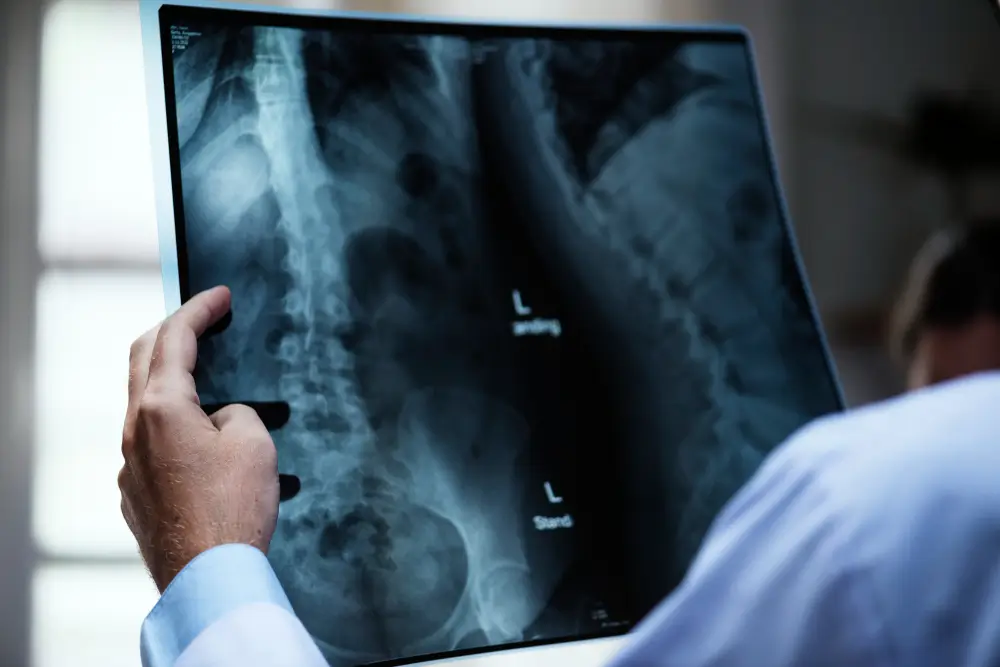What if everything you thought you knew about scoliosis treatment was only part of the story? The question “Can scoliosis be fixed?” sparks more than just curiosity—it opens the door to surprising possibilities for spinal health. In this article, we explore real, often overlooked paths that go beyond the basics and may redefine what it means to truly improve scoliosis.
Improve posture, reduce pain—Schedule scoliosis-focused physical therapy now! 🧍♀️🌟

What It Really Means to “Fix” Scoliosis
Talking about “curing” scoliosis can cause confusion, since, unlike other medical conditions, scoliosis usually does not have a definitive cure. Instead of completely eliminating the spinal curvature, the realistic goal of treatment is to control it, improve symptoms, and prevent progression.
Ignoring scoliosis or delaying treatment can lead to serious risks. One of the main consequences is the progressive worsening of the curve, especially during growth periods. This can cause chronic pain, muscle fatigue, limit mobility, and interfere with daily activities. In more advanced cases, the deformity can compromise respiratory or cardiac function by reducing thoracic space.
There are also emotional consequences: the visible appearance of the curve can cause insecurity, anxiety, or low self-esteem, particularly among adolescents. Delaying treatment can also increase the complexity of future interventions.
Early treatment and proper medical monitoring are essential. Rather than aiming for an absolute cure, the goal is to preserve the patient’s overall well-being, prevent complications, and allow for a full, healthy life.
Real Treatment Paths That Help Improve Quality of Life
Scoliosis affects people differently, so treatment must be tailored to each individual. The main goal of any treatment is to reduce pain and prevent future complications.
Here are real treatment paths that can make a significant difference in daily life for those living with scoliosis:
Physical therapy and exercises: Physical therapy and personalized exercises are important tools for managing scoliosis, especially in mild to moderate cases.
Main benefits:
- Strengthening back muscles
- Improving posture and body alignment
- Reducing pain and increasing mobility
Orthopedic devices: Braces and orthotic devices are used to slow or control curve progression, particularly during growth in children and adolescents.
Features:
- Regular use as prescribed by a doctor
- More effective when the spine is still developing
- Do not completely correct the curve but help prevent it from worsening
Surgery: When scoliosis is severe or continues to progress despite other treatments, surgery may be necessary.
There is no single solution for all cases of spinal curvature. Choosing the right treatment based on the patient’s profile and focusing on symptom management and complication prevention is essential.
With the right and consistent approach, it is possible to live an active and functional life with scoliosis.
When Surgery Becomes a Consideration—And When It Doesn’t
Surgery is not the first treatment option for scoliosis but can be essential in certain cases. It is generally considered when the curvature exceeds 45-50 degrees according to the Cobb angle, when there is significant progression despite conservative treatments, or when the patient experiences persistent pain or functional limitations.
Cases where surgery is considered
| Severe curvatures (≥45-50°) | Health issues caused by large curves in young patients. |
| Continuous progression | Curve worsens despite treatments like bracing. |
| Persistent pain | Chronic pain affecting quality of life in adults. |
| Respiratory problems | Severe curves impair lung function; surgery can help breathing. |
| Aesthetic reasons | Some patients seek surgery to improve appearance. |
Cases where surgery is not recommended
| Mild curvatures (<20-25°) | Can be managed with observation and exercises. |
| Adults with stable scoliosis | No pain or progression; surgery usually unnecessary. |
| Medical contraindications | Additional health problems make surgery risky or not feasible. |
Considerations before surgery
- Personalized evaluation: Each case must be evaluated individually, taking into account the patient’s overall health, lifestyle and goals.
- Risks and benefits: Surgery can offer significant benefits, but it also involves risks that should be carefully analyzed.
A full medical evaluation and a personalized approach for each patient make all the difference.
Supporting the Spine Naturally: Daily Habits That Make a Difference
Healthy daily habits can greatly impact the management of scoliosis. Activities like walking, practicing yoga, or swimming help strengthen back muscles, maintain better posture, and reduce discomfort associated with spinal curvature.
Besides exercise, paying attention to posture during everyday activities like sitting, sleeping, or lifting objects is essential. Avoiding high-impact movements and maintaining proper posture can help prevent the curve from worsening. The use of supportive devices like braces and maintaining a healthy weight are also recommended.
For those seeking specialized support in the management of scoliosis, physical therapist Ricarte Ligsay, with more than four decades of experience working with various spinal pathologies, is an excellent choice. His comprehensive and personalized approach has been instrumental in improving the functionality and well-being of his patients.
Sources:
- Aebi, M. (2005). The adult scoliosis. European spine journal, 14, 925-948.
- Michelsson, J. E. (1965). The development of spinal deformity in experimental scoliosis. Acta Orthopaedica Scandinavica, 36(sup81), 3-91.
